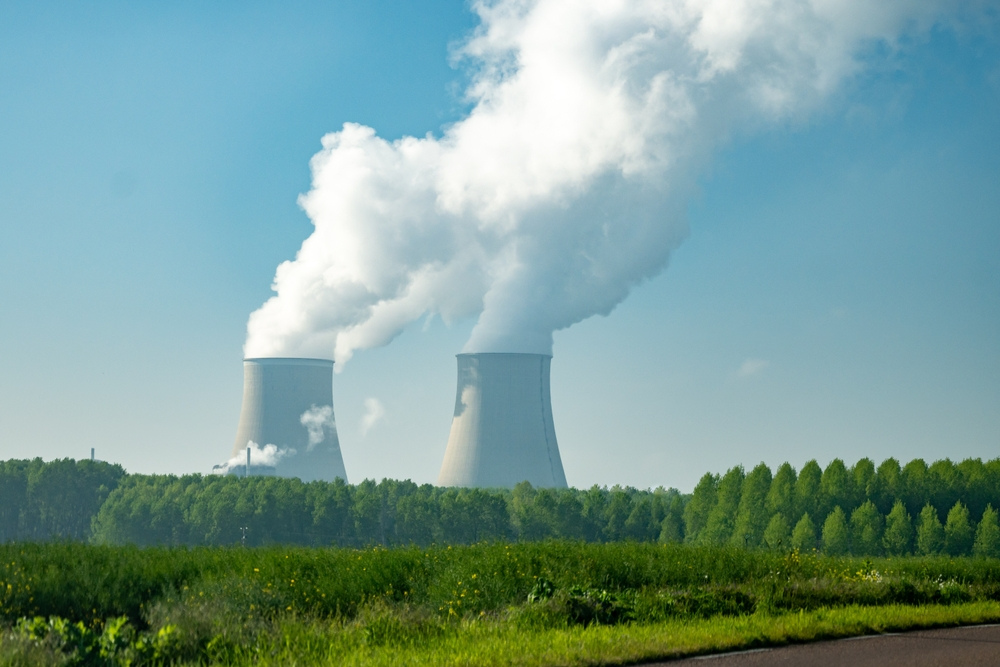
The "next Manhattan Project" may have just launched in the United States.
On Friday, President Trump signed a sweeping set of executive orders aimed at accelerating the deployment of nuclear energy as AI data centers demand massive energy loads.
Trump signed four executive orders targeting the nuclear industry, including one directive for “total and complete reform” of the Nuclear Regulatory Commission (NRC).
Under the new mandate, the NRC must issue reactor license decisions within 18 months.
Nuclear industry executives joined Trump in the Oval Office for the signing, including Constellation Energy CEO Joe Dominguez.
Constellation Energy operates the largest fleet of nuclear power plants in the U.S. and recently inked a 20-year deal with Microsoft to restart Three Mile Island.
“We're wasting too much time on permitting and we're answering silly questions — not the important ones,” Dominguez said.
The revival of Three Mile Island is especially symbolic. It’s the site of America’s worst nuclear accident in 1979. It also became a turning point in regulatory overreach, many in the industry argue.
On Friday, U.S. Interior Secretary Doug Burgman didn’t hold back.
“This is a huge day for the nuclear industry. Mark this day on your calendar,” he said. “This is going to turn the clock back 50 years on over-regulation of this industry.”
Trump himself called nuclear “a hot industry, a brilliant industry” but emphasized that “you have to do it right.” He described modern nuclear tech as safe, clean, and essential to American leadership.
“This will make us the real power in this industry, which is a big industry,” he said.
After the news broke, Nano Nuclear Energy (NNE) soared 30.07%. Oklo (OKLO), which went public earlier this year via a SPAC linked to OpenAI co-founder Sam Altman, jumped 23.04%. NuScale Power Corp. rallied 19.43%.
Shares of Constellation (CEG) gained just over 2% because it’s a more mature company that has less direct leverage to new SMR projects.
This is not just about SMRs
The Trump administration’s nuclear push is largely a response to Silicon Valley’s pursuit of cheap energy.
With artificial intelligence development exploding across the board, tech companies are hunting for power sources that are clean, stable, and cost-efficient.
Former Oklo board member Chris Wright, now serving as U.S. Secretary of Energy, has called the AI race “the next Manhattan Project,” invoking the top-secret effort that gave the world its first atomic bomb.
“We led post-World War II in all things nuclear, but then we’ve been stagnated,” Burgman said. “We choked it with overregulation.”
Even Trump, who once voiced concerns on the Joe Rogan Experience about nuclear being “too big and too complex and too expensive,” now appears to be all in.
“There’s a little danger to nuclear... we had some really bad nuclear,” he said back in October.
But on Friday, he changed his tone entirely.
While most headlines focused on small modular reactors (SMRs), Trump made clear that the administration is also embracing legacy nuclear projects.
“We’re also talking about the big plants, the very, very big, the biggest,” he said. “We’re going to be doing them also.”
With the NRC’s licensing process now under a political microscope, and bipartisan support growing for grid-scale energy reform, the U.S. nuclear revival might finally be more than just a talking point.
And for SMR developers, legacy plant operators, and power-hungry tech giants alike, the opportunity is enormous.
Your email address will not be published. Required fields are markedmarked